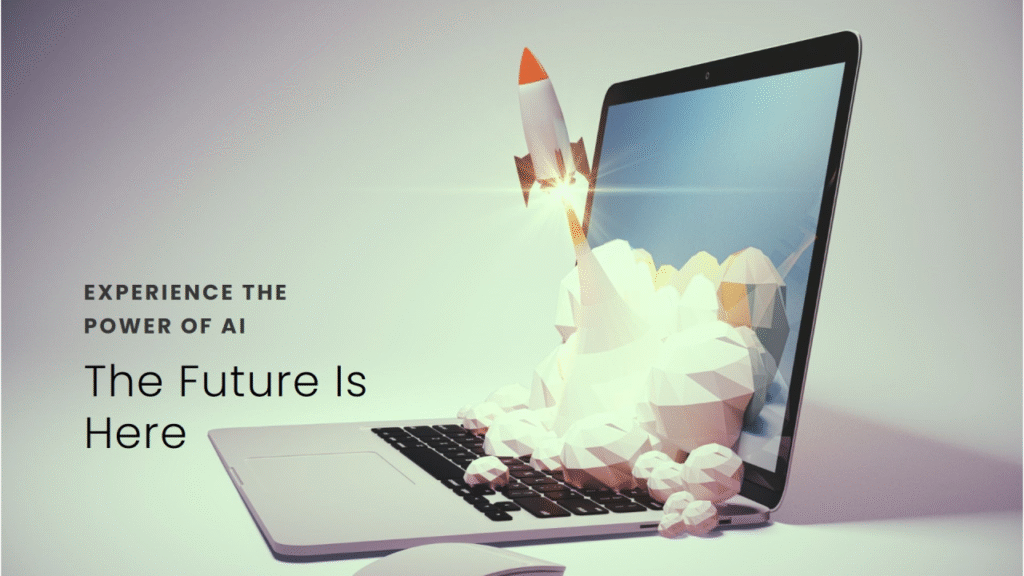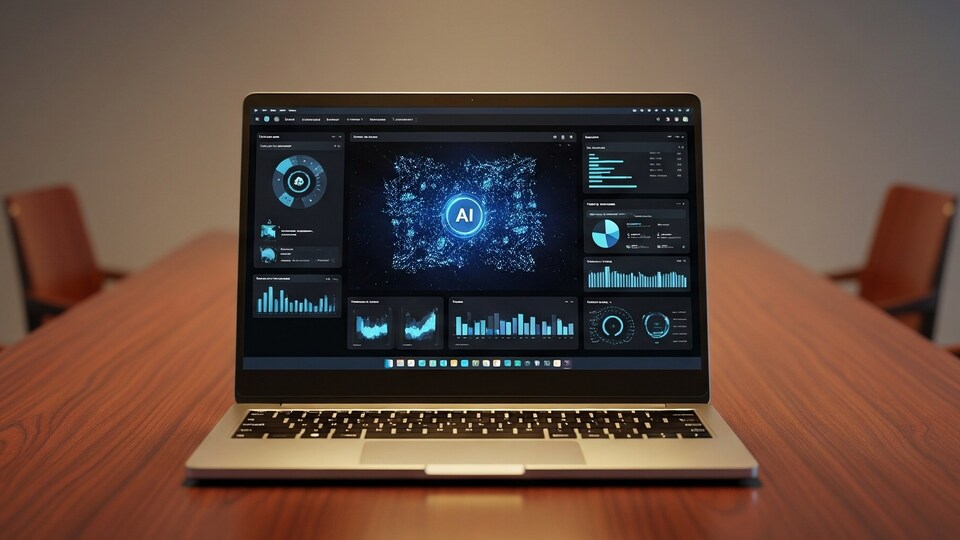Discover why AI-embedded laptops with built-in NPUs won’t make discrete GPUs obsolete anytime soon. In this 2025 deep dive, explore technical comparisons, real benchmarks, expert predictions, and buying advice.
AI-embedded laptops now integrate NPUs (Neural Processing Units) to offload AI inferencing from CPUs and GPUs, boosting efficiency and enabling offline AI features. But will this innovation make dedicated graphics cards obsolete? This comprehensive analysis reveals why discrete GPUs still matter for gaming, rendering, and AI training.
As artificial intelligence becomes the heartbeat of modern computing, laptop manufacturers are embedding AI accelerators—known as NPUs (Neural Processing Units)—directly into CPUs. These specialized chips promise to enhance performance for local AI tasks like noise reduction, generative editing, and real-time translation.
Will AI-embedded laptops make graphics cards obsolete?
The short answer: Not anytime soon.
While NPUs deliver impressive efficiency for specific AI tasks, discrete GPUs remain unmatched in areas like gaming, 3D rendering, and large-scale AI training. However, the relationship between NPUs and GPUs is evolving—and it’s worth understanding where the future is headed.
This long-form guide will help you explore:
- How AI embedding in laptops works
- Key differences between NPUs and GPUs
- Real-world benchmarks and product examples
- Scenarios where GPUs still dominate
- Predictions for the next decade
- FAQs based on real search trends
- Buying advice for 2025 and beyond
What Exactly Is an AI-Embedded Laptop?
Defining the Concept
An AI-embedded laptop integrates a Neural Processing Unit (NPU) — a specialized chip optimized for running AI inference tasks efficiently.
Unlike CPUs (central processing units) or GPUs (graphics processing units), NPUs are designed specifically for matrix math, tensor operations, and quantized AI workloads like object detection, denoising, and language inference.
Major examples include:
- Intel’s Meteor Lake and Lunar Lake chips with integrated NPUs.
- AMD Ryzen AI series featuring on-chip neural accelerators.
- Apple M-series chips with the powerful Neural Engine.
These chips are engineered to handle AI tasks that once required discrete GPUs or cloud computing.

How AI-Embedded Laptops Differ From Traditional Ones
Traditional laptops route all computing tasks through the CPU and GPU. This can lead to thermal throttling and reduced efficiency during AI-intensive operations.
AI laptops, on the other hand, include a third core element—the NPU—to take over specific inferencing workloads such as:
- Background blur in video calls
- AI upscaling for photos and videos
- Local generative AI tasks (e.g., small language models)
- Intelligent noise suppression
- Power optimization through predictive algorithms
In short:
The CPU handles logic, the GPU handles visuals, and the NPU handles intelligence.
Marketing Hype vs. Hardware Reality
While companies tout “AI PCs” as revolutionary, it’s important to remain grounded. Having an NPU doesn’t make your laptop a powerhouse like an RTX 4090-equipped gaming rig.
According to Tom’s Hardware, Microsoft’s Copilot+ PC initiative could even make some early AI laptops feel outdated within a year due to evolving standards and capabilities.
Reality check: AI embedding is an evolution, not a replacement for GPUs.
NPUs vs. GPUs: Strengths, Weaknesses, and Synergies

Let’s break down what each chip does best — and where each falls short.
When NPUs Shine
- Power Efficiency
NPUs consume far less power than GPUs, making them perfect for sustained tasks like real-time speech recognition, background AI effects, and offline inferencing. - Latency and Responsiveness
Because NPUs process data locally (instead of sending it to the cloud), they dramatically reduce latency for tasks like live transcription and photo enhancement. - Privacy and Offline Functionality
NPUs enable on-device AI without sending personal data to the cloud—crucial for privacy-focused users and enterprise applications. - AI-Specific Workloads
NPUs are optimized for tensor math and matrix multiplication—perfect for lightweight AI tasks, not full-scale rendering.
Where GPUs Still Reign Supreme
- Gaming Performance
GPUs are still responsible for real-time graphics rendering, ray tracing, and high frame rates. NPUs can’t replace that pipeline. - 3D Modeling and Rendering
Tools like Blender, Maya, and Unreal Engine rely heavily on CUDA cores and VRAM bandwidth—areas where NPUs lag behind. - AI Training and Simulation
Training large language or vision models (e.g., GPT, Stable Diffusion) demands teraflops of compute and huge memory bandwidth—something NPUs simply can’t match yet. - Memory & Bandwidth
GPUs come with dedicated high-speed VRAM, essential for handling large datasets and textures.
The Future Is Hybrid, Not Singular
Rather than replacing GPUs, NPUs will complement them. In a balanced architecture:
- NPUs handle inference (smart AI tasks).
- GPUs handle rendering, physics, and training.
- CPUs coordinate system logic.
This hybrid triad defines the next generation of laptops.
Real-World Examples & Benchmarks
Let’s look at some real products and data to back up this discussion.
Intel’s Lunar Lake + Xe²-LPG GPU
Intel’s upcoming Lunar Lake chips feature:
- Integrated Xe² GPU cores for graphics
- Dedicated NPU block for AI inference (~67 TOPS performance)
- Improved power efficiency for thin-and-light laptops
Even with these enhancements, Intel continues to pair them with discrete GPUs in performance laptops—proof that the GPU still has a role.
NVIDIA RTX AI Laptops (2024–2025)
NVIDIA announced over 200 laptop designs featuring RTX GPUs with AI acceleration (TensorRT, DLSS 3.5, and Frame Generation). These laptops combine CPU + NPU + discrete GPU for optimal AI and gaming workloads.
ASUS and MSI AI Laptop Launches
At Computex 2024, ASUS and MSI unveiled laptops with RTX AI branding, showcasing real-time generative effects and intelligent resource management—powered by the combination of NPUs and GPUs, not one replacing the other.
Performance Reality Check
According to Wccftech, the RTX 4090 still delivers up to 15× AI throughput compared to modern NPUs. TensorRT-LLM support further accelerates model inference, showing that GPUs retain a massive lead in compute-heavy workloads.
Framework Modular Laptops
Framework’s modular laptops now allow users to swap in discrete GPU modules, proving that even in a future of AI laptops, flexibility and discrete power remain key.
What the Industry Roadmaps Reveal
The hardware landscape is shifting—but not as fast as headlines suggest.
AMD’s Discrete NPUs
AMD is exploring dedicated NPU cards for desktops, similar to how GPUs evolved in the early 2000s. These could handle AI tasks separately, giving users the best of both worlds: powerful AI inference and independent graphics rendering.
Unified Computing: CPU + GPU + NPU
Leaked reports hint at an upcoming 120W Nvidia APU combining CPU, GPU, and NPU on a single die—possibly by 2026. While exciting, such systems will likely take years to reach mass-market adoption.
Forecast: AI PCs Are Coming Fast
- By 2027, over 60% of new PCs will be marketed as “AI-enabled,” according to industry forecasts.
- These systems will handle small language models locally while offloading large-scale training to the cloud.
- However, hardware fragmentation means not all “AI PCs” will offer equal performance.
Key takeaway: The GPU’s reign continues — but with more company at the table.
Popular Question-Based Clusters (Queries Answered)
Q1: Will AI laptops make graphics cards useless for gamers?
Absolutely not. Gaming relies on shader cores, ray tracing units, and frame rendering—tasks built into GPUs. NPUs handle AI-assisted effects but cannot replicate the visual fidelity or FPS performance of a discrete GPU.
Q2: Can NPUs replace GPUs in content creation workflows?
Only partly. For AI-assisted editing, denoising, or background removal, NPUs shine. But tasks like video rendering, 3D animation, and compositing demand GPU horsepower. Most creators still depend on GPUs for Adobe Premiere Pro, DaVinci Resolve, and Blender workflows.
Q3: Do NPUs improve real-time video editing?
Yes—but in specific ways. They accelerate AI filters, noise reduction, and face recognition, reducing export times. Yet, when it comes to timeline playback, color grading, or transitions, the GPU remains critical.
Q4: Will discrete GPUs ever become obsolete?
Not likely. Over the next decade, discrete GPUs may pivot to AI datacenters and premium workstations, but they’ll still dominate in gaming and professional visualization.
Q5: Are AI laptops worth the price premium?
If you run local AI models, use productivity tools with AI assistants, or care about privacy, yes. For casual users or pure gamers, a GPU-equipped non-AI laptop may offer better value.
Q6: What should I buy in 2025 to stay future-proof?
- Choose CPUs with built-in NPUs (Intel Core Ultra, AMD Ryzen AI, Apple M3).
- Pair with a discrete GPU if you game or edit professionally.
- Pick modular or upgradeable laptops (e.g., Framework).
- Ensure at least 16–32GB RAM and fast SSDs for AI workloads.
Q7: Will developers start using NPUs for gaming AI?
Partially. NPUs might handle NPC decision-making or AI upscaling, but rendering pipelines will stay GPU-driven. Expect AI-enhanced gameplay, not AI-rendered visuals.
Q8: Can AI features be added to older laptops?
Yes, using GPU-based inference or external AI accelerators (via USB or Thunderbolt). However, they consume more power and deliver lower performance than native NPUs.
Q9: How do cloud GPUs fit into this picture?
Cloud GPUs will still handle massive workloads — from LLM training to rendering farms. Local NPUs simply reduce latency and data dependency for personal AI use.
Q10: How does this affect console gaming?
Future consoles may integrate NPUs for smarter AI opponents and in-game features. However, the rendering engine will still revolve around GPU cores.
Practical Takeaways & Buying Advice
Gamers & 3D Designers
- Keep your discrete GPU — it’s still essential for performance.
- NPUs add value only for side features (like AI upscaling).
- Choose systems with strong thermals and upgrade paths.
Content Creators & AI Enthusiasts
- NPUs help accelerate AI filters, real-time transcription, and automation.
- But GPUs remain vital for rendering and exporting.
- Aim for balance: NPU for efficiency, GPU for horsepower.
Future-Focused Users
- Watch for Nvidia and AMD unified APU releases.
- Don’t overpay for “AI PC” branding unless you’ll use AI features daily.
- Consider modular systems (like Framework) to stay adaptable.
Timeline Predictions: The Road Ahead
| Year | Expected Development | Impact |
|---|---|---|
| 2025–2027 | NPUs become standard on mid-range laptops | Improved on-device AI features |
| 2027–2030 | Unified APU (CPU+GPU+NPU) emerges | Hybrid performance gains |
| 2030+ | NPUs rival GPUs for light workloads | GPUs shift to high-end and datacenter markets |
Bonus FAQs
Q1: Will NPUs ever handle AI training?
Not fully. NPUs are designed for inference, not training. They can fine-tune smaller models but lack memory bandwidth for large-scale training.
Q2: Can external AI accelerators replace GPUs?
External accelerators (like Google Coral or NVIDIA Jetson) can offload inference but can’t deliver rendering power equal to discrete GPUs.
Q3: Do local AI models outperform cloud AI?
For quick, privacy-sensitive tasks, yes. For large model generations, cloud AI remains superior due to scale.
Q4: Will handhelds and consoles add NPUs?
Likely yes. They’ll use NPUs for AI-driven NPCs, real-time effects, and predictive gameplay optimization.
Q5: Are AMD’s Strix Halo and Ryzen AI chips game-changers?
They’re strong contenders — merging CPU, GPU, and AI logic. But even AMD admits discrete GPUs remain critical for heavy 3D workloads.
Final Thoughts: Coexistence, Not Competition
To wrap it all up:
- AI-embedded laptops are the future, but they won’t replace GPUs.
- NPUs complement GPUs, handling inference while GPUs manage rendering and compute.
- Discrete GPUs continue to dominate gaming, 3D design, and large-scale AI.
- The next decade will belong to hybrid computing, not single-chip supremacy.

